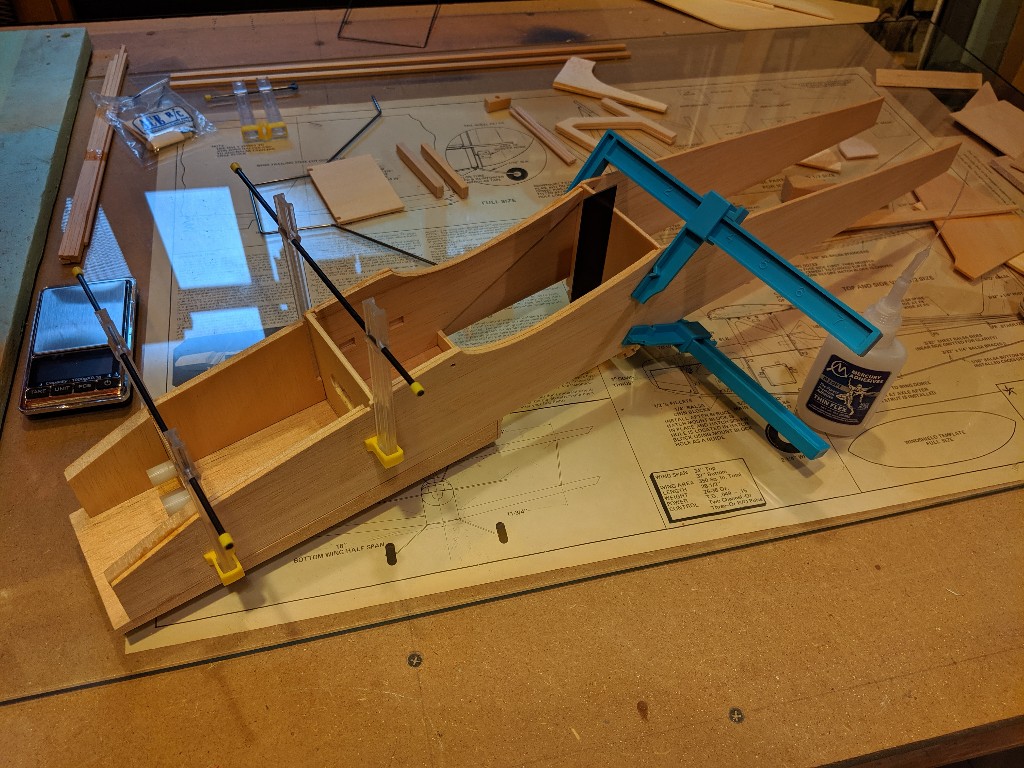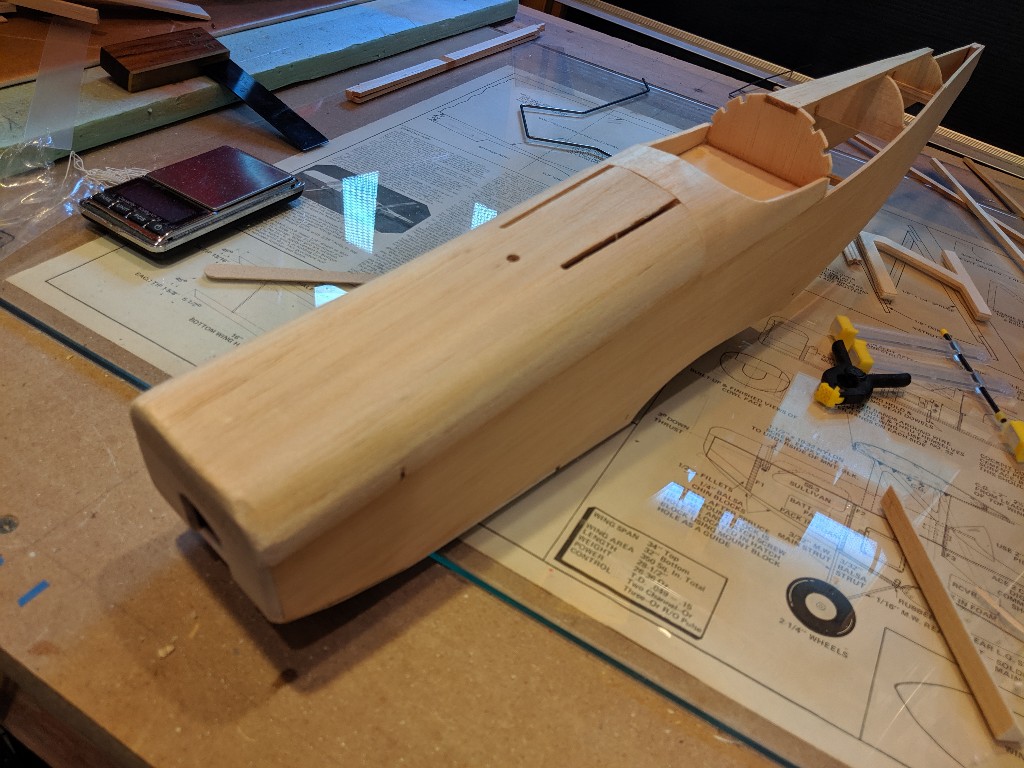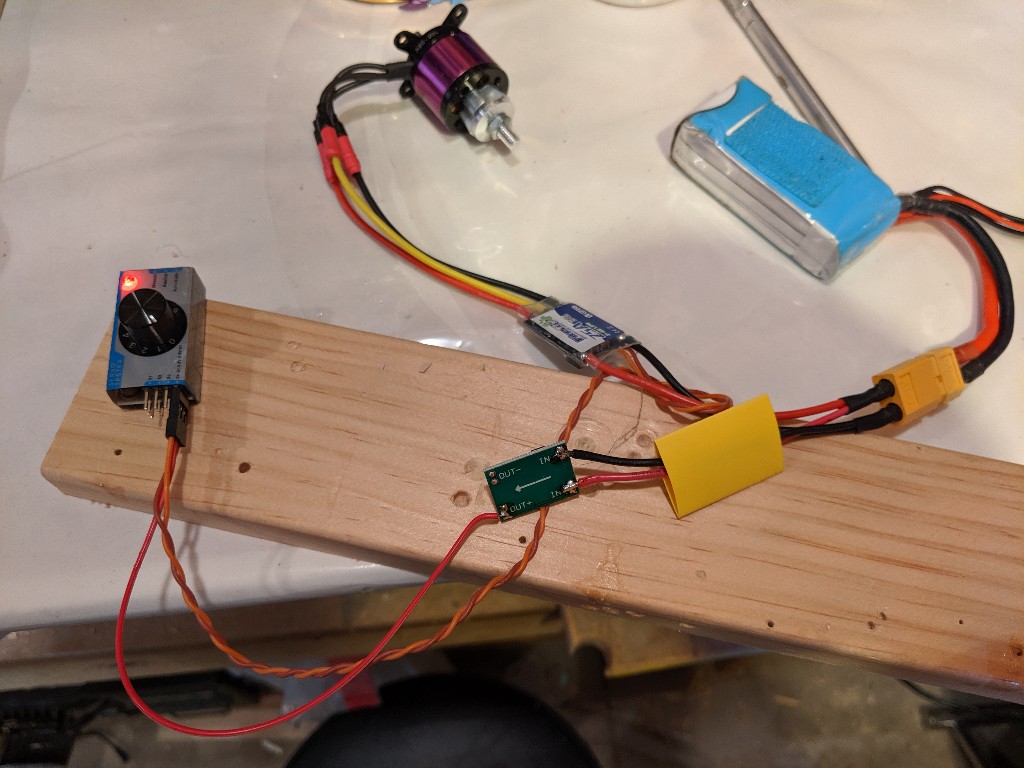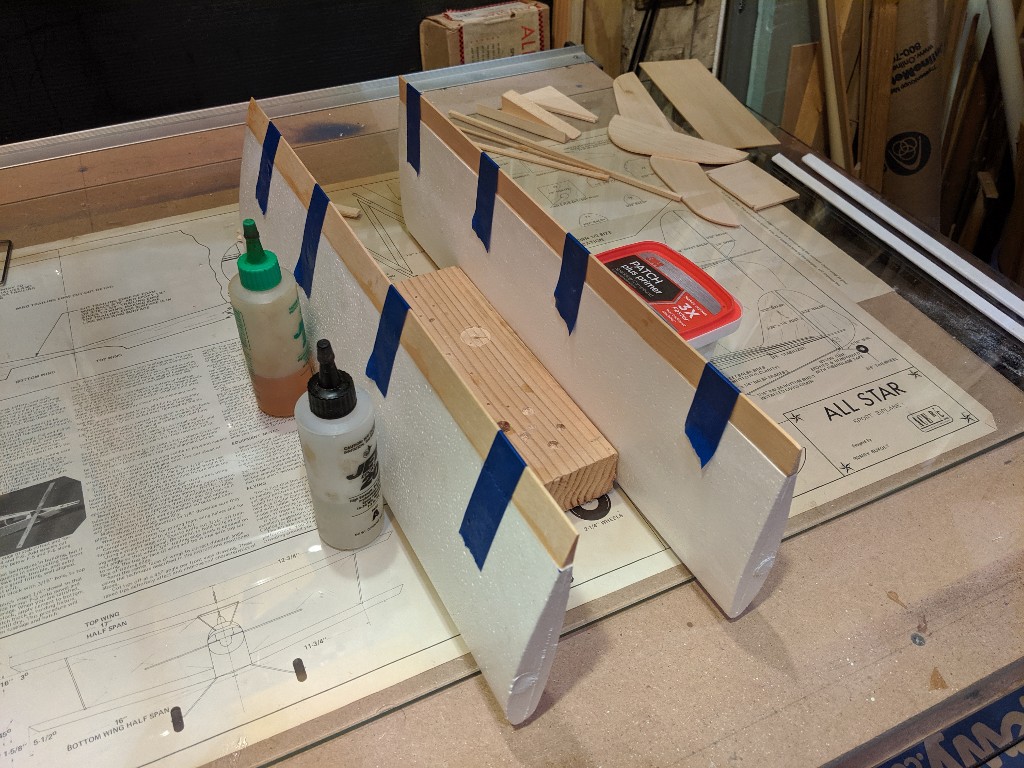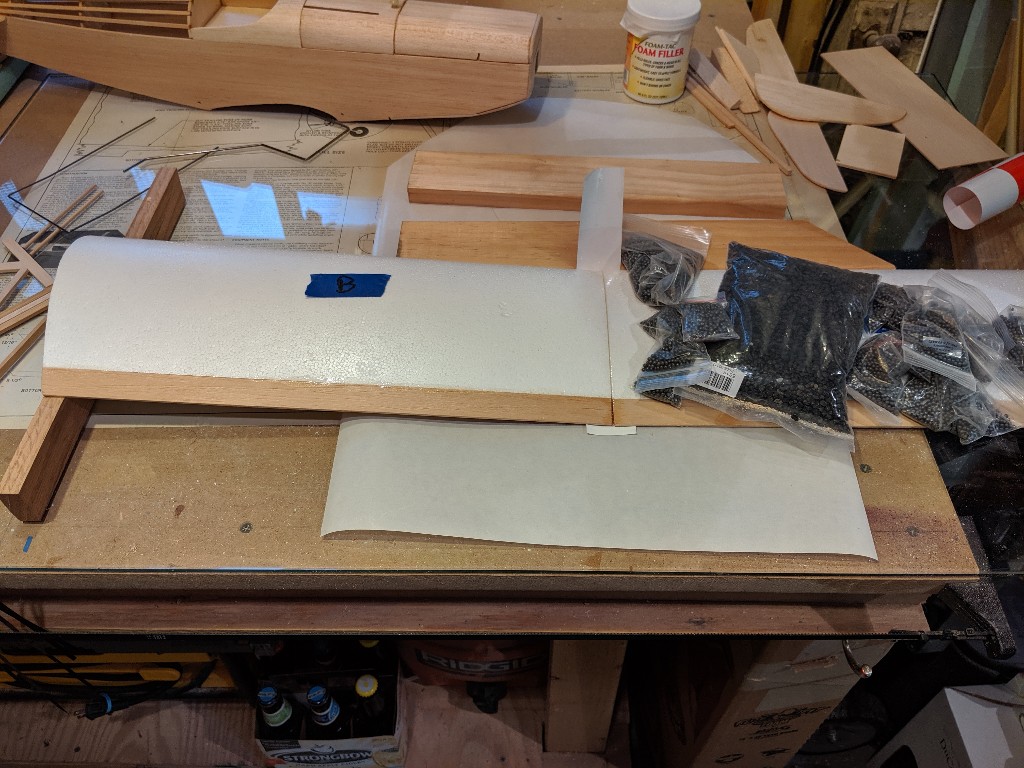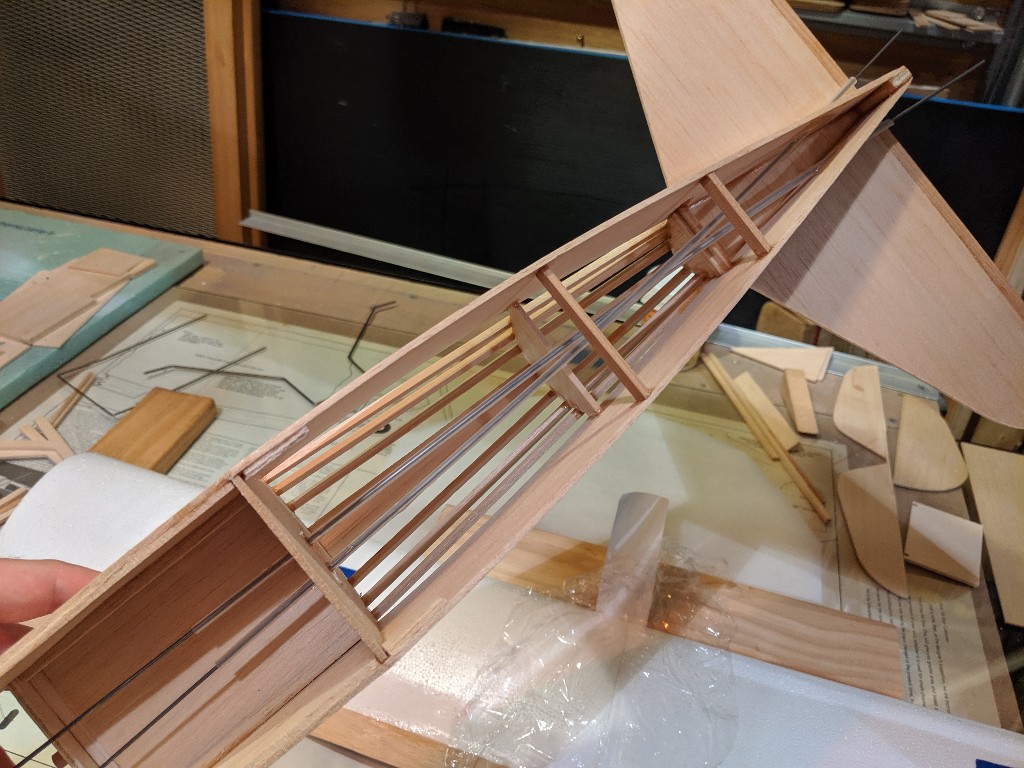After getting the ARC Nu-Bee 2 all ready for maiden flight (and waiting on a pinstriping brush to finish up the paint job) it's time to make some balsa dust!
I found a classic ACE All Star Biplane kit at an estate sale of a local modeler. This plane was designed in 1972 by Roman Bukolt and published in Radio Control Modeler magazine the design was later kitted by ACE as it used their constant chord foam wing (not the tapered one identified on the box). Since Willy Nillie's hasn't started laser cutting this classic 1/2A design yet I was thrilled to get one of the vintage kits complete with foam wings.

Luckily the plans for the All Star are available on Outerzone for reference - cause the ones that come in the kit are not full size!
https://outerzone.co.uk/plan_details.asp?ID=1355 Reading over some notes from other builders it looks like I should shoot for 32 ounces max - 900 grams in metric - so I'll need to dig around my motor pile to see what I have that's appropriate.
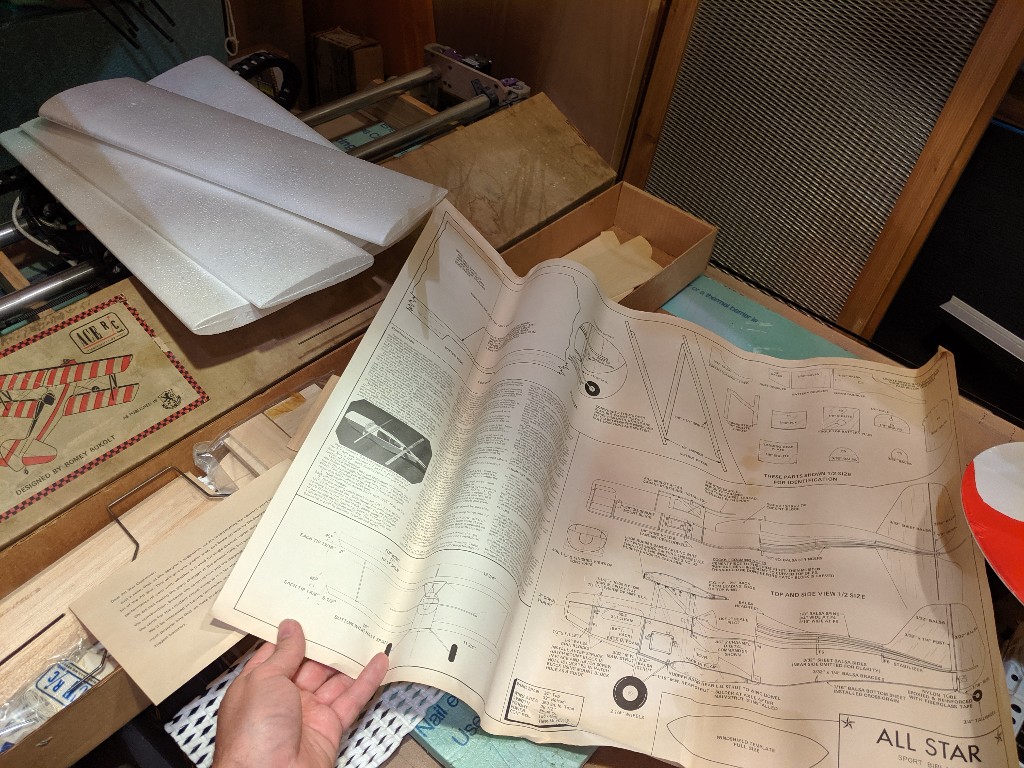
The plans are also curled up pretty solidly, so I put them under a sheet of glass (tempered desk top picked up off the side of the road) and started arranging all the parts.

There are text instructions in the kit, so with lots of reading and re-reading, I'm starting off slowly. First up is gluing in the nose doublers. The kit says glue in all three doublers, but I'm going to do them one at a time in hopes I can keep things aligned better that way. Below is a piece of plastic keeping the glue from attaching the two sides of the fuselage together at the top while the nose doubler dries. Next I'll glue in the firewall and second doubler.
Below is a piece of plastic keeping the glue from attaching the two sides of the fuselage together at the top while the nose doubler dries. Next I'll glue in the firewall and second doubler.

[Edit: Want a sneak peak of how she looks all finished? Of course you do! ]
]

I found a classic ACE All Star Biplane kit at an estate sale of a local modeler. This plane was designed in 1972 by Roman Bukolt and published in Radio Control Modeler magazine the design was later kitted by ACE as it used their constant chord foam wing (not the tapered one identified on the box). Since Willy Nillie's hasn't started laser cutting this classic 1/2A design yet I was thrilled to get one of the vintage kits complete with foam wings.

Luckily the plans for the All Star are available on Outerzone for reference - cause the ones that come in the kit are not full size!
https://outerzone.co.uk/plan_details.asp?ID=1355 Reading over some notes from other builders it looks like I should shoot for 32 ounces max - 900 grams in metric - so I'll need to dig around my motor pile to see what I have that's appropriate.

The plans are also curled up pretty solidly, so I put them under a sheet of glass (tempered desk top picked up off the side of the road) and started arranging all the parts.

There are text instructions in the kit, so with lots of reading and re-reading, I'm starting off slowly. First up is gluing in the nose doublers. The kit says glue in all three doublers, but I'm going to do them one at a time in hopes I can keep things aligned better that way.

[Edit: Want a sneak peak of how she looks all finished? Of course you do!

Last edited:


